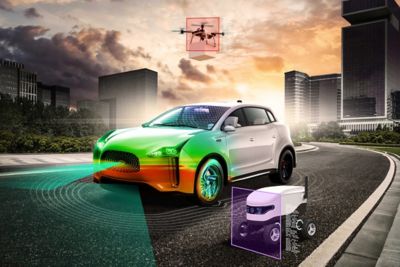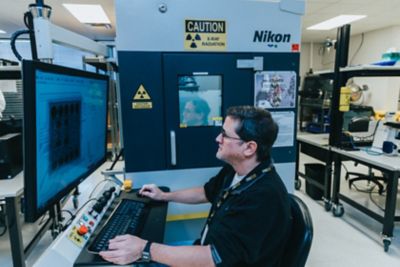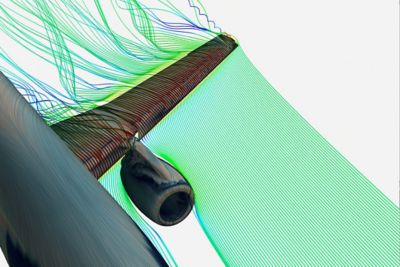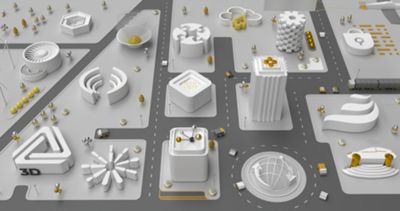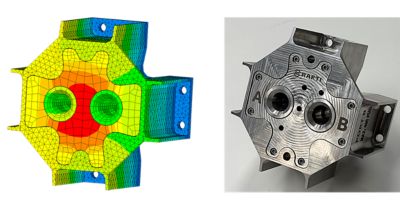The early era of launch vehicles featured capability to orbit that took many years to develop and cost billions to implement, yet those rockets (and their upper stages) were fully expendable. The first stage, or propulsive booster phase, either would burn up in the atmosphere or was intended to splash down in the ocean. Meanwhile, the payload-carrying second stage would be scuttled on orbit as space debris or burned up on reentry. Many early space missions, such as those aimed at reaching the Moon or exploring other planets, were designed for single use. The engines, structures, and avionics were not capable of withstanding the extreme temperatures of reentry, let alone refurbishment and reuse.
With the space economy evolving and expected to reach $1.8 trillion by 2035, repeatedly building new rockets isn’t an economically or environmentally viable option. It also can’t keep up with the demand for rapid and assured access to space, nor for the cadence that launch must achieve to support both commercial and military needs in space. As a result, we’re seeing a new sort of space race — one with innovators vying to be first to market with the next breakthrough in fully reusable rocket technology and on-orbit dynamic space operations.
Among the contenders is Stoke Space. The Kent, Washington-based startup has upped the ante as one of the only companies working on a rapidly reusable complete launch system, including both the first and second stages of the vehicle. Stoke Space’s 100% reusable, medium-lift rocket provides access to, through, and from space with a goal to reduce the access costs to orbit by orders of magnitude from the current partially expendable era.
Stoke Space is partnering with commercial and government customers. The company has raised nearly $500 million in venture funding and has sold multiple commercial launches on its fully reusable Nova rocket.
Stoke has also received a $4.5 million award from the Defense Innovation Unit (DIU) to advance “commercial solutions that enable responsive and precise point-to-point delivery to orbit, between vehicles in orbit, and precisely to Earth via novel reentry vehicles and methods.” DIU is a Department of Defense (DoD) organization focused on accelerating the adoption of commercial and dual-use technology to solve operational challenges at speed and scale. In addition to the DIU award, Stoke has been on-ramped to the OSP-4 IDIQ contract supporting tactically responsive U.S. Space Force task orders and is also executing study work with the Department of Energy (DOE).

A Stoke Space test tank. Credit: Stoke Space.
Super Nova
Stoke Space’s Nova rocket has a reusable upper stage designed for dynamic maneuverability during all stages of flight. In addition, this novel upper-stage technology is being used for in-space mobility solutions to reposition satellites and other space assets; deliver payloads to different destinations, including lunar bases and Mars missions; and grab materials, equipment, and components manufactured in microgravity and bring them back to Earth, demonstrating what are known as downmass capabilities. When those activities are complete, the upper stage will travel safely through the fiery thermal environment of reentry, landing vertically and propulsively back on Earth, to be quickly refurbished and relaunched.
The second stage of Stoke Space’s Nova rocket offers customers dedicated, direct, on-demand access to exotic orbits. Because the second stage is typically more complex and expensive than the first stage, making it reusable significantly reduces overall launch costs. In addition, a reusable second stage can increase the frequency and variety of missions. Even ambitious missions, such as deep space exploration, become possible by making it more affordable to launch heavy payloads.
Ultimately, the ability to reuse rockets without extensive downtime increases the number of missions that can be conducted. Spreading fixed costs over more launches drives down costs and enables the payload customers to spend more on their technologies and core missions.

I Believe I Can Fly: Simulation Rocket Technology Before Launch
Of course, making reusable rockets that can operate with the frequency of commercial aviation is no small task. In fact, it’s one of the biggest challenges in aerospace today. These launch vehicles must withstand thermal extremes, immense internal pressures, high- frequency vibration, and sudden shock. They must also be powerful enough to reach space, efficient enough to conserve fuel, and reliable enough for multiple uses with limited refurbishment.
While these things must be tested and validated in the field, Stoke Space’s Chief Operating Officer Kelly Hennig says early development simulation helps eliminate basic failure modes so engineers can get to the test stand sooner and let real-world data be the primary guide.
In this phase, “seamless integration between computer-aided design (CAD) and analysis, fast meshing, and fast solving are crucial, and Ansys excels in these areas,” she says.
That’s why the Stoke Space team relies heavily on Ansys simulation software — primarily Ansys Mechanical structural finite element analysis software across the entire launch system and Ansys Thermal Desktop thermal-centric modeling software for payload environment analysis. The idea, says Engineering Lead John Ziadat, is to let the hardware believe it’s flying in space.
“We’ve used Ansys simulation throughout all phases of development to help gain an understanding of the effect that various loads — thermal, pressure, inertial, and so on — will have on the hardware during flight,” he says.
Scott Zweibel, vice president of government affairs, adds that simulation ensures that Stoke Space meets the requirements at each stage of the mission. That includes keeping the rocket’s integrated engine and heat shield — a unique system providing propulsion and protection — safe during reentry.
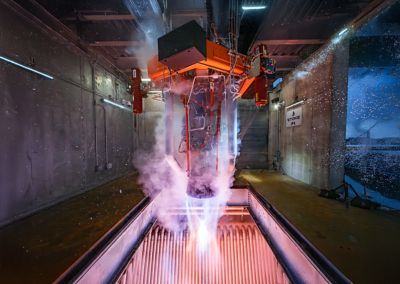
Stoke Space tested the Nova rocket’s stage one engine on a vertical test stand in December 2024. Credit: Stoke Space.
Creating a Heat Shield That Cools Itself
Reentering Earth’s atmosphere safely is one of the most demanding phases for a spacecraft. During this critical period, the vehicle must manage extreme heat and pressure, which can be detrimental to its structure and systems. To ensure safe reentry, Stoke Space used Mechanical software for thorough thermal stress analysis, helping the company develop what it calls “the world’s most robust — and the only actively cooled — reentry heat shield.”
Unlike traditional reentry heat shields for space planes or space capsules, which rely passively on materials that can naturally withstand high temperatures and absorb heat, Stoke Space’s heat shield is designed to actively cool itself. Specifically, a regenerative cooling system allows the propellant to flow through cooling channels in the shield, absorbing heat from the combustion chamber and nozzle to drive the turbine and power the fuel and oxidizer pumps. Thrusters embedded around the heat shield provide steerability and control for the upper stage during reentry.
Unlike most spacecraft shields, which are made of high-temperature-resistant but often fragile ceramic tiles, Stoke Space’s shield is manufactured metal. That makes it ductile and robust, requiring less refurbishment between missions.
The Nova rocket’s heat shield is only one factor that sets the Nova rocket apart. Its first-stage engine employs a full-flow staged combustion (FFSC) cycle — a high- performance, high-efficiency design with complex architecture comprising numerous interconnected components.

The Stoke team. Credit: Stoke Space.
Closing the Gap Between Expectations and Reality
In December 2024, Stoke Space hotfired the Nova rocket’s stage one engine on a new vertical test stand at the company’s Moses Lake, Washington, private test facility. Hotfiring involves igniting a test rocket mounted on a test stand to verify the engine’s performance, including its thrust, fuel consumption, and overall functionality, under conditions that closely simulate actual flight.
While this was the first vertical hotfire of the “Zenith” FFSC engine, it was only the latest in
a series of tests meant to replicate real-world experiences and minimize the difference between predicted and actual hardware performance.
Ansys has played a crucial role in bridging that gap, Hennig says.
“As development progresses, Ansys’ ability to handle nonlinear problems and areas like structural dynamics, thermal, fluids, and acoustics becomes invaluable,” she says. “Using Ansys for integrated and comprehensive simulations helps ensure that the physical tests align closely with expectations, making the transition from development to real-world application smoother and more reliable.”
Ansys software also helps Stoke Space engineers understand not just whether their hardware works but why, enabling them to adapt to changing parameters and mission requirements.
And because the Ansys high-performance computing (HPC) suite integrates with Amazon Web Services (AWS), it gives Stoke Space cost-effective access to massive computing resources, enabling the company to speed up its design process. In fact, Ziadat says solutions that might have taken more than days on a local machine are now done in hours.
“We need to move fast, and the only way to do that is with digital simulation,” Hennig says. “Ansys has allowed us to design multiple iterations, update models after testing, understand the assumptions and whether they were correct, then do it all again quickly.”
In the race to build a new breed of rocket, having that kind of speed is an undeniable advantage.
"We’ve used Ansys simulation throughout all phases of development to help gain an understanding of the effect that various loads — thermal, pressure, inertial, and so on — will have on the hardware during flight."
— John Ziadat, Engineering Lead, Stoke Space




